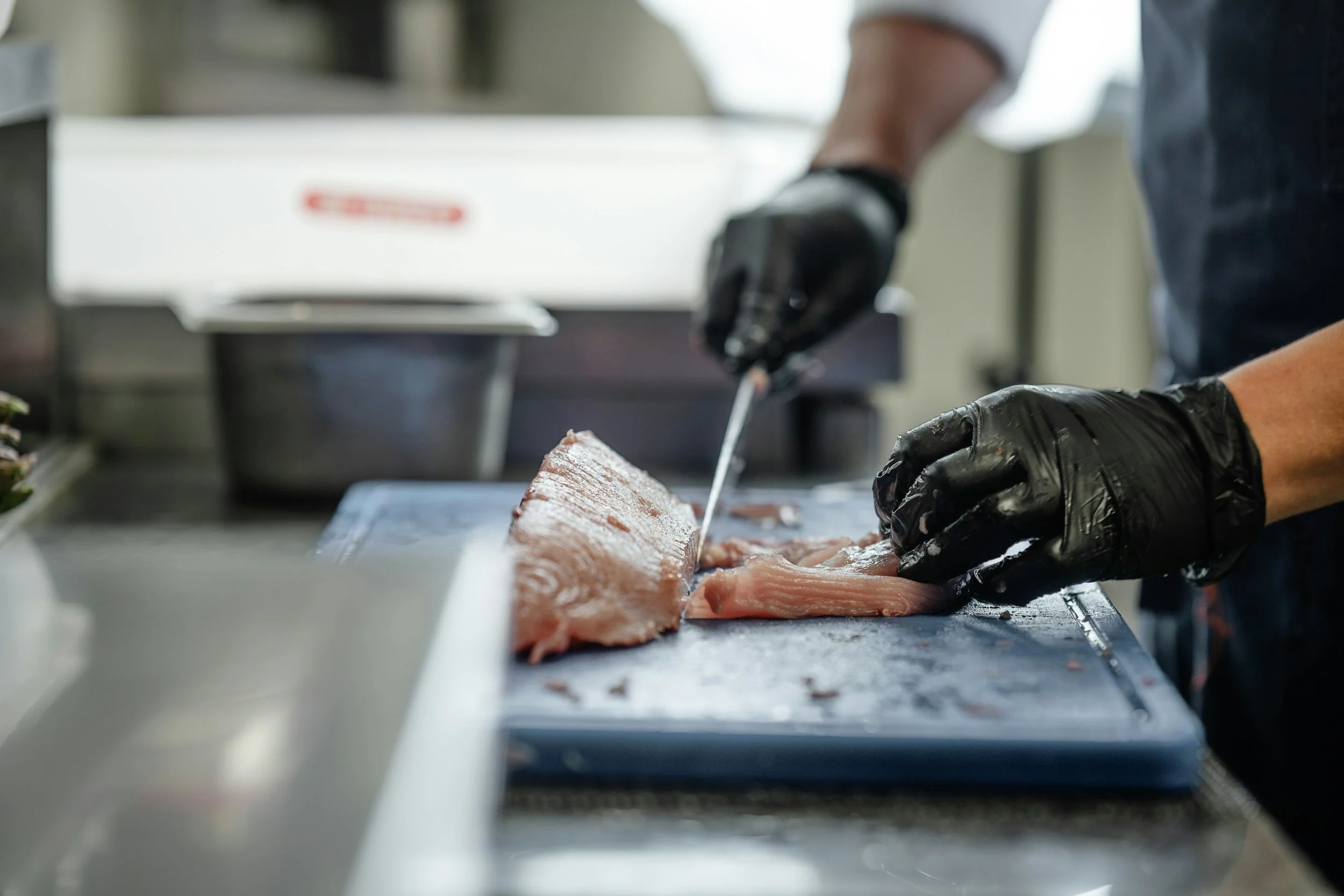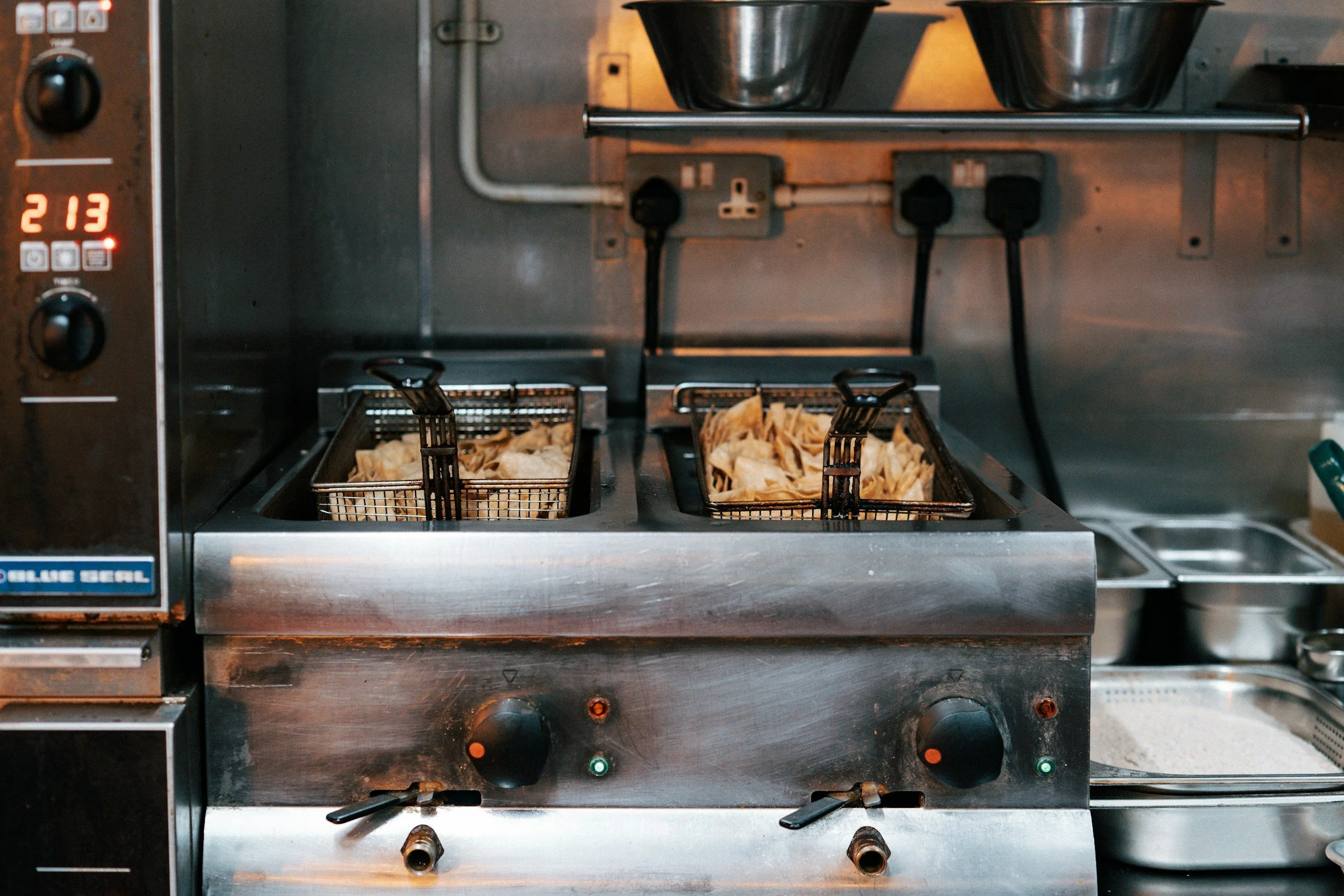Cross-Contamination Versus Cross-Contact: What’s the Difference?
If you're new to gluten-free living or have recently been diagnosed with celiac disease, you may have heard both "cross-contact" and "cross-contamination" used when talking about food safety. While they’re often used interchangeably, they actually mean different things—and understanding the distinction is important when dining out or preparing meals at home. So, which is the correct term, and what is the difference?
What is cross-contamination?
“Cross-contamination” is a term used in food safety to describe the transfer of harmful bacteria (like Salmonella or E. coli) from one surface or food to another. This is a concern when handling raw meat, unwashed produce, or improperly cleaned cooking tools. If this happens, you get a foodborne illness.
Here are some common examples:
Cutting raw chicken and then vegetables on the same board
Employees handling food without washing their hands
Equipment contaminated with bacteria in factories or restaurants
While cross-contamination is a big deal in any kitchen, it’s not specific to gluten.
To prevent cross-contamination and the spread of bacteria, always use a separate cutting board for raw meat and wear gloves when handling it.
What is cross-contact?
“Cross-contact” occurs when food allergens or gluten are accidentally transferred from one food or surface to another that is intended to be allergen-free or gluten-free. For people with celiac disease or gluten sensitivity, even a tiny trace of gluten from “cross-contact” can cause serious illness.
Here are some common examples:
Using the same knife to cut a regular sandwich and then a gluten-free one
Toasting gluten-free bread in a shared toaster
French fries cooked in oil that was also used to fry breaded items containing gluten
A chef using the same gloves or cooking surface for both gluten and gluten-free meals
Even a crumb of gluten can trigger symptoms and intestinal damage in someone with celiac disease. That’s why cross-contact must be taken seriously.
To prevent gluten cross-contact in a fryer, use separate equipment and fresh oil dedicated to preparing gluten-free food. This means using separate fry baskets, utensils, and even dedicated fryers. Always ask your server or chef if a fryer is truly gluten-free before ordering fried food.
Quick Comparison
Cross-Contamination Bacteria & Pathogens Foodborne illness Cooking will kill the bacteria and/or pathogens
Example: Raw chicken touching salad
Cross-Contact
Allergens or proteins
Immune reaction
Cooking will NOT kill off the allergens or proteins
Example: Gluten crumbs on a gluten-free plate
Why are these terms used?
Many people are unfamiliar with celiac disease and gluten sensitivities, and even fewer understand what “cross-contact” means or why it can make someone with an autoimmune condition seriously ill. However, the term “cross-contamination” is more widely recognized, especially in the context of food safety and allergies.
Since food service workers often receive training in food preparation to prevent illness, those in the gluten-free community sometimes use the term “cross-contamination” simply because it's better understood (and seems to be taken more seriously). It’s similar to how, when asked if we have an allergy, we say “yes” when ordering food, even though celiac disease is an autoimmune disorder. This shows the ongoing need for education and awareness about gluten-related conditions in the food industry and beyond.
We get it…
While the technically correct term for gluten transfer is “cross-contact,” we completely understand why many people say “cross-contamination” instead. As mentioned above, “cross-contamination” is often more widely recognized and taken seriously in restaurants.
So go with whatever feels most comfortable and gets the point across, especially when speaking with servers or chefs. We’ve said it ourselves, “I’m allergic to gluten and can’t have any cross-contamination.”
Say whatever you need to say to ensure your meal is safe!
Let us turn your dream vacation into reality!
When you work with us, you’ll get the following:
Recommendations for destinations, hotels, and cruises based on your needs
A custom itinerary and assistance booking excursions and transportation
Gluten-free travel tips and restaurant recommendations for your destination
Gluten-free translation cards to show restaurant servers
Custom document package mailed to you with your itinerary, confirmations, travel tips, and more!
Blog by: Ellen Nestorick
Travel Advisor
Ellen specializes in travel to the Caribbean, Mexico, Disney, and cruises for those with celiac disease or a gluten sensitivity.
Ready to plan your next vacation? Let our team make the process easy and stress-free!
Our travel agents specialize in:
Caribbean & Mexico
Disney World
Europe
Cruises



